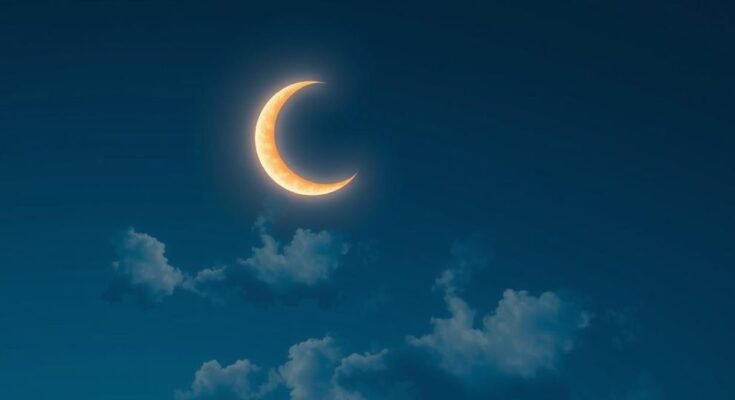Eid ul Fitr 2025 was observed on March 30 in Saudi Arabia, despite contradictory predictions from astronomers who stated that the crescent moon would not be visible on March 29. Official declarations claimed visibility of the moon, leading to celebrations, though skepticism arose regarding the validity of sightings, emphasizing the need for thorough understanding of moonsighting methodologies within Islamic practices.
Eid ul Fitr 2025 commenced on March 30 in Saudi Arabia, as well as various other nations including the United Arab Emirates, Qatar, and Kuwait. The announcement from Saudi Arabia was made shortly after 3 PM (UK time) on March 29, despite contradictory astronomical predictions indicating that sighting the crescent moon was not feasible on that date. By that time, it was already the 29th day of Ramadan in Saudi Arabia, a critical period for moonsighting according to Islamic customs.
The declaration marked the conclusion of Ramadan and the beginning of the month of Shawwal, which heralds the celebrations of Eid ul Fitr, meaning ‘festival of breaking the fast’. Traditionally, the festivities last for three days. However, UK astronomers and the HM Almanac Office had forecasted a failure to observe the crescent moon on March 29, stating, “Sightings of the crescent moon are unlikely for most of the globe on Saturday, March 29th.”
Contrary to these predictions, officials from Saudi Arabia’s Two Holy Mosques declared on social media that the crescent moon was sighted, confirming that Eid would be celebrated on March 30. Local reports had suggested limited visibility of the crescent moon, asserting it would be observable for a mere 7 to 8 minutes if sky conditions permitted. Ten astronomical observatories throughout Saudi Arabia monitored for the first sighting of the crescent moon.
Abdullah Al-Khudairi, a moonsighting observer, remarked that the debate surrounding the sighting’s feasibility mainly involved amateur observers rather than experts, emphasizing favorable sky conditions for the crescent’s visibility. Despite some claims and skepticism from observers, a sighting was reported at Tamir Observatory.
Critics raised doubts about the validity of the sighting, questioning the methods used and alleging possible deception. Statements were made requesting time-stamped photographic evidence to corroborate the sighting. Notably, the New Crescent Society in the UK forecasted a sighting outcome contradicting scientific feasibility, suggesting that phantoms in sighting dates often coincide with pre-scheduled calendars like the Umm al Qura calendar, which does not align with lunar visibility moments.
Experts, including Dr. Zahid Nawaz, emphasized the challenges in sighting the crescent due to various astronomical factors like moon age and illumination. He also pointed out the partial solar eclipse occurring on March 29, which would further complicate any efforts to sight the crescent at that time. In the UK, some communities follow Saudi announcements, including significant Eid celebrations organized at Green Lane Masjid in Birmingham on March 30.
The commencement of Eid ul Fitr 2025 in Saudi Arabia and other nations raised discussions regarding the credibility of moonsighting practices amidst differing astronomical predictions. While Saudi officials claimed a successful sighting, doubts were articulated by various observers and astronomers highlighting the discrepancies between scientific calculations and official announcements. Hence, understanding the methodology of moonsighting remains vital as communities navigate these culturally significant observances.
Original Source: www.birminghammail.co.uk




